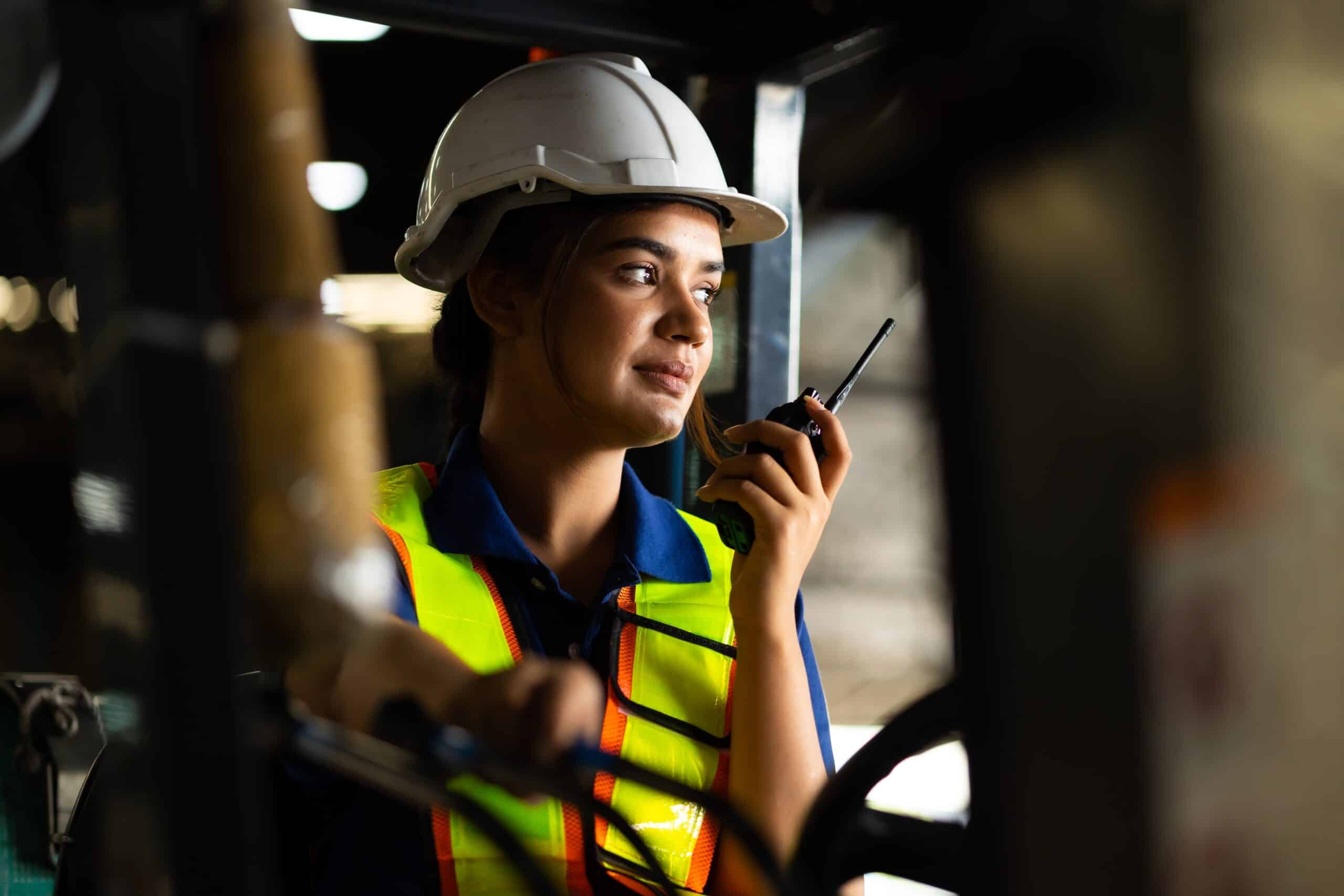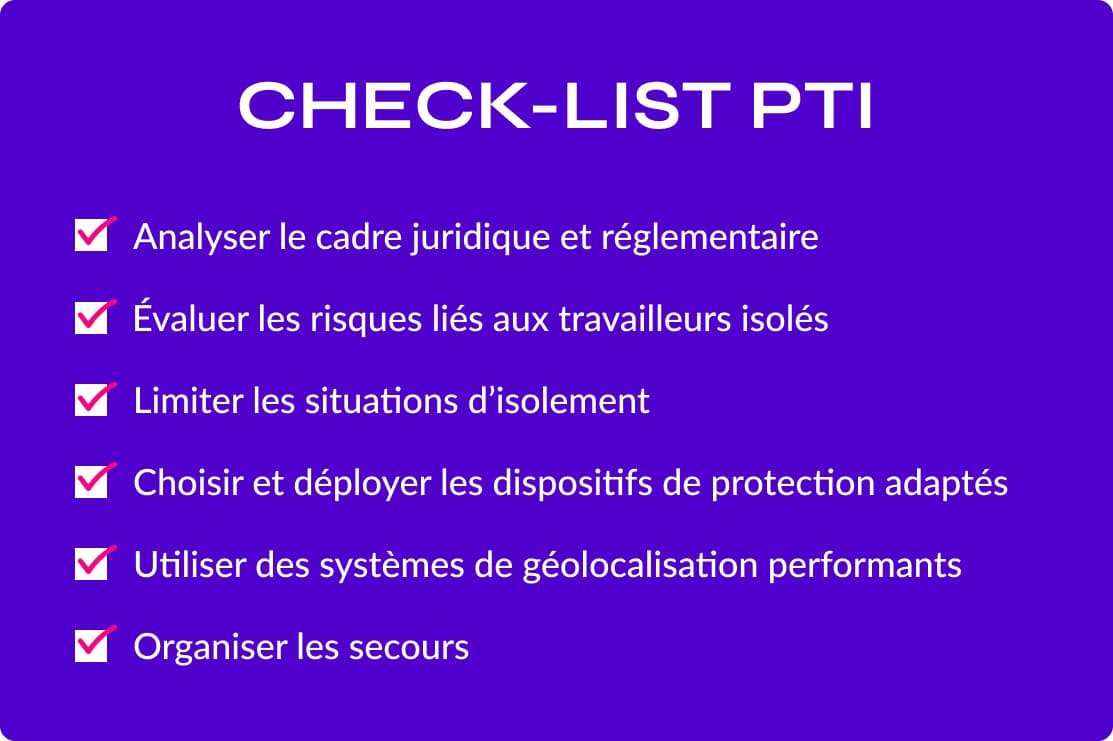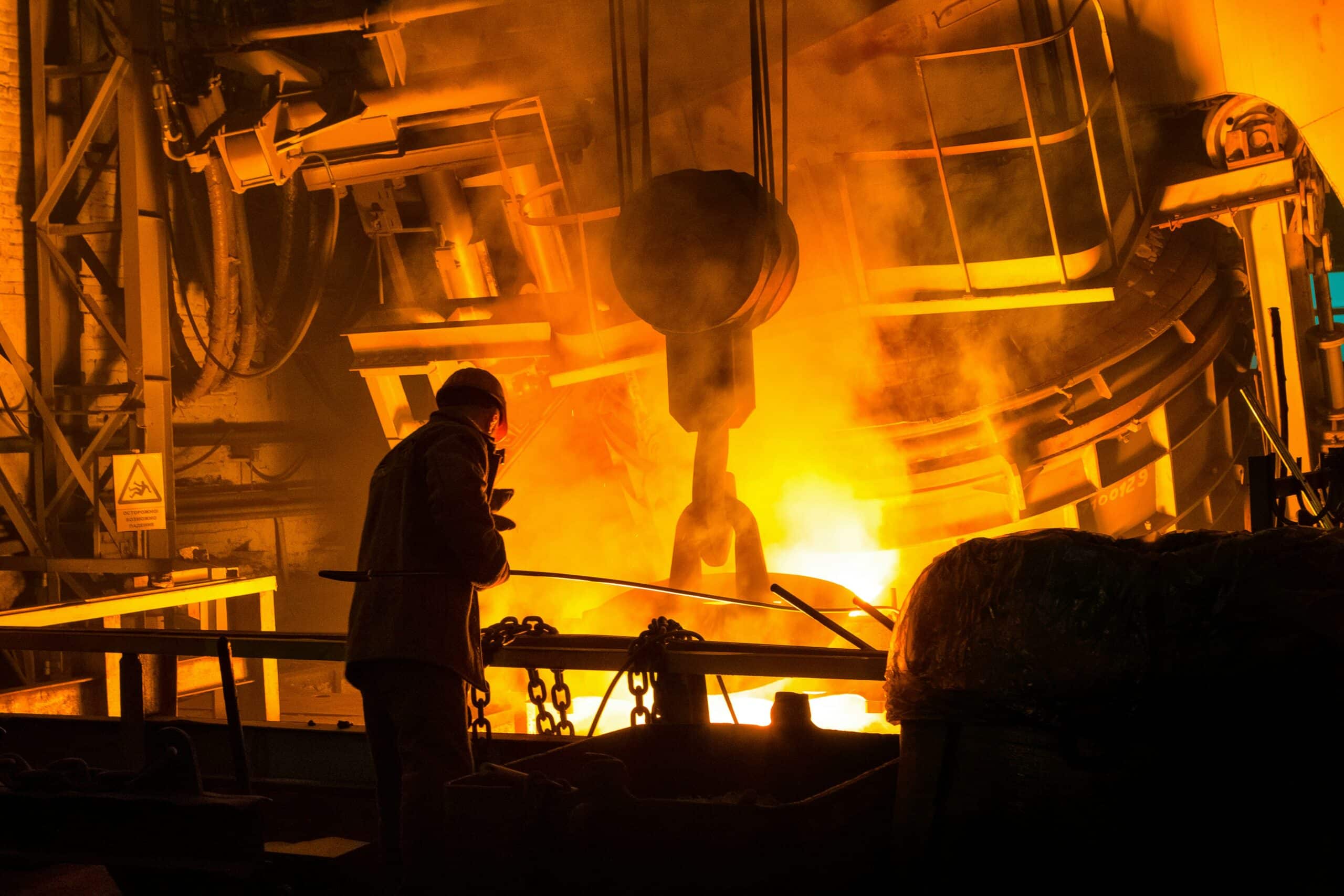To ensure effective management of emergency situations, it is essential to establish precise reporting protocols tailored to the specific risks of the business. These procedures must detail the means of triggering the alert (SOS button, automatic call, motion sensors), the contacts to be notified (in-house team, emergency services) and the actions to be taken at each alert level. Regular training of workers in these procedures ensures their effectiveness in real-life situations.

Checklist of lone worker protection essentials
Protecting isolated workers is a crucial issue for many companies. To help managers put in place the most appropriate systems, discover our checklist of key elements to consider.
Share this article
Contents
Share this article
Protecting isolated workers: a priority for companies
Protecting lone workers is both a legal obligation and a priority for companies employing people who have to carry out their duties out of sight and hearing of their colleagues. These situations of isolation expose employees to a variety of risks - accidents, discomfort or aggression - requiring appropriate and effective protective measures. To help managers implement these essential safety solutions, we have drawn up a checklist of essential elements to be taken into account.

1. Analyze the legal and regulatory framework for lone worker protection
Before deploying lone worker protection systems, it is essential to analyze the legal and regulatory framework applicable to the territory in which the company operates, as well as its sector of activity. In France, several legal provisions govern the protection of lone workers:
In France, for example, employers are required to identify and assess lone-worker situations as part of their occupational risk assessment.The French Labor Code also stipulates that certain types of work cannot be carried out by a lone worker, such as work involving the manual carrying of a mass in excess of 30 kg, or requiring the use of insulated respiratory protective equipment.
In the United States, the protection of isolated workers is governed by the Occupational Safety and Health Administration (OSHA). Although OSHA does not have specific regulations for all sectors, certain industries, such as shipbuilding, are subject to precise standards.
Other international regulations, such as the HSE regulations in the UK, impose risk prevention requirements. A clear understanding of these obligations is essential to ensure legal compliance and avoid penalties.
2. Assess the risks associated with isolation
LIST SPECIFIC RISKS
This stage begins by identifying all situations where an employee is out of sight or hearing range of his or her colleagues. This identification must take into account different locations, working hours and conditions.
Once isolated work situations have been identified, the employer must analyze the risks associated with each one. This analysis includes :
Risks linked to the working environment: presence of dangerous machinery, handling of toxic substances, risks of falls or accidents linked to the infrastructure.
Work-related risks: tasks requiring sustained attention, use of specific equipment, working at heights or in confined spaces.
Psychosocial risks: stress linked to isolation, feelings of loneliness, anxiety due to lack of immediate support in the event of a problem.
Isolated workers have invaluable knowledge of the risks associated with their activity. Involving them in the assessment process enables us to identify potential hazards that might otherwise be overlooked, and to propose pragmatic solutions.
CONSIDER AGGRAVATING FACTORS
Certain factors can increase the vulnerability of isolated workers:
Extreme weather conditions: working outdoors in extreme heat or cold.
Atypical working hours: working at night or during low-traffic periods, reducing the chances of assistance when needed.
Isolated areas: operations in places far from rescue centers or difficult to reach.
Documenting and updating risk assessments
Risk assessment must be formalized in a dedicated document. In France, in accordance with article R. 4121-1 of the Labor Code, this is the Document Unique d'Évaluation des Risques (DUER). This document must be updated regularly, particularly in the event of changes in working conditions or following an incident.
A rigorous, participative assessment of the risks associated with working alone is essential if effective preventive measures are to be put in place.
3. Limit isolation through organizational measures
WORK REORGANIZATION AND FLEXIBLE WORKING HOURS
Analyze processes to identify tasks that can be carried out in pairs or teams, thus reducing the number and duration of isolated interventions. INRS recommends "reducing the number and duration of isolated interventions" to minimize risks.
Avoid scheduling isolated tasks during high-risk periods, such as nights or weekends, when help is less available.
Strengthening communication
Establish protocols for regular communication with lone workers, such as telephone calls at defined intervals or the use of automatic time-clock systems, then determine a plan of action in the event of the lone worker's non-response, including the steps to follow and the people to contact.
Provide employees with reliable means of communication, such as cell phones or two-way radios, to keep in touch at all times.

The best way to limit the risks associated with isolated workers is to adopt a work organization designed to reduce situations of isolation as much as possible.
4. Select and deploy appropriate protection devices
Identify needs
Before selecting a device, it is essential to carry out an in-depth analysis of the risks associated with the tasks of lone workers. This assessment must take into account the nature of the work (working at heights, handling hazardous substances, frequent travel), the environment (factory, outdoor environment, site with restricted access) and working hours (night work, weekends, low-traffic periods).
Compare the different solutions available
Isolated worker protection devices fall into several categories, including :
- Isolated Worker Alarm Devices (IWADs ): portable equipment capable of detecting a fall, prolonged immobility or sending a manual alert via an SOS button, such as Theseus.
- Geolocation systems: tools for real-time tracking of workers, often integrated into DATIs or smartphones, ensuring rapid intervention in the event of a problem.
- Mobile security applications: smartphone-based solutions offering features such as automatic check-ins, SOS alerts and route tracking.
- Intelligent video surveillance: used in industrial environments to detect unusual behavior and alert emergency services in the event of an incident.
Take into account technical and operational constraints
Each solution must be assessed in the light of the company's specific constraints, in particular :
- Device autonomy: a key factor for workers working outdoors or over long periods.
- Connectivity: certain environments (white zones, basements) require solutions that operate without a cellular network.
- Ergonomics and acceptability: equipment must be easy to use and not interfere with daily work.
- Regulatory compliance: devices must meet the legal requirements of the country of operation, such as those defined by INRS in France or OSHA in the USA.
5. Use high-performance geolocation systems
An effective geolocation solution is essential to ensure the safety of lone workers, enabling seamless tracking both indoors and outdoors. The main difficulty lies in the transition between these environments.
The geolocation technologies most commonly used to protect isolated workers are :
GPS (Global Positioning System):
Accurate outdoors, but ineffective indoors. It depends on satellite signals, which are often unavailable in buildings or underground areas.
Wi-Fi and Bluetooth Low Energy (BLE):
High-performance indoors thanks to triangulation of signals emitted by bollards. Requires dense infrastructure for optimum accuracy.UWB (Ultra Wideband):
Highly accurate indoors, with a margin of error of less than a metre. Requires numerous specific beacons and costly installation.
The Wheere solution: a smooth indoor-outdoor transition
Unlike traditional solutions, Wheere offers a hybrid technology that ensures a seamless transition between indoors and outdoors, with no loss of tracking. Thanks to a combination of low-frequency waves and advanced algorithms, Wheere guarantees :
- Sub-metre precision for complex environments (industrial sites, hospitals, etc.).
- Continuity of service, even in the absence of a GNSS signal, ensuring uninterrupted real-time tracking.
- Simplified installation, requiring no heavy infrastructure, unlike UWB solutions.
- Compatibility with various devices, enabling seamless integration with existing safety equipment.
6. Organize rescue operations
It is crucial to put in place an effective response plan to manage emergency situations, integrating :
Define clear alert procedures
Guaranteeing rapid response
Rapid response to incidents depends on the availability of qualified human resources and appropriate technical resources. It is crucial to define clear roles for intervention teams, to set up precise means of locating them, and to ensure that communication systems allow smooth transmission of information. Regular simulation exercises test the effectiveness of the system and improve responsiveness in case of need.
Did you like it?
Share it and discover other articles you might also like!
- News
- News
- Articles

